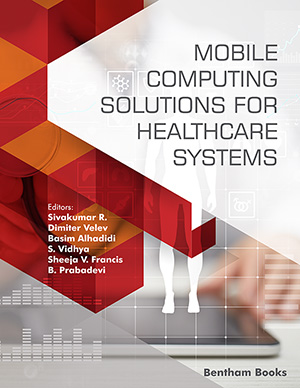
Abstract
Background: Argania spinosa L. seed oil is a Moroccan endemic product that is used traditionally as an alternative treatment for diabetes.
Objective: The present work aims to evaluate the hemoglobin antiglycation and the antioxidant effect of roasted (Roil) and unroasted (UnRoil) Argan seed oil in vitro.
Methods: The antioxidant activity was evaluated by different methods (total antioxidant capacity by the ammonium molybdate, metal chelating activity, ferric reducing antioxidant power, 1, 1-diphenyl- 2- picrylhydrazyl free radical scavenging, and β-carotene bleaching test), and the protein antiglycation effect was tested using hemoglobin, in vitro.
Results: The results showed that both oils possess an important antioxidant effect and the roasting process did not influence the total antioxidant capacity, metal chelating activity, and β-carotene bleaching test. Although, it significantly influences the antiradical activity of Argania spinosa L. seed oil (p < 0.05) with IC50 values of 21.47 ± 0.076 μg/mL for Roil and 4.01 ± 1.13 μg/mL for UnRoil. Besides, Roil and UnRoil it significantly inhibit the hemoglobin glycation activity, with IC50 values of 1.09 ± 0.31 and 0.16 ± 0.031 mg/ml respectively. Moreover, it was noted that UnRoil has a lower IC50 value than Roil, which means that UnRoil has a more potent activity than Roil (p < 0.05).
Conclusion: Argania spinosa L. seed oil is an essential source of natural antioxidants and hemoglobin antiglycation that plays a key role in scavenging of free radicals and might be used for reducing the development of diabetic complications.
Keywords: Diabetes, Argania spinosa, roasting process, protein glycation, hemoglobin antiglycation, antioxidant, in vitro.
[http://dx.doi.org/10.1007/s11886-019-1107-y] [PMID: 30828746]
[http://dx.doi.org/10.1038/414813a] [PMID: 11742414]
[http://dx.doi.org/10.1016/j.arcmed.2010.05.007] [PMID: 20637376]
[http://dx.doi.org/10.1051/jbio:2007024] [PMID: 17978753]
[http://dx.doi.org/10.1016/j.mehy.2004.02.042] [PMID: 15288366]
[http://dx.doi.org/10.1016/j.nupar.2010.07.002]
[http://dx.doi.org/10.2174/157339912799424528] [PMID: 22268395]
[http://dx.doi.org/10.1016/j.aca.2012.11.051] [PMID: 23340280]
[http://dx.doi.org/10.1007/s10298-004-0041-2]
[http://dx.doi.org/10.1016/j.clnu.2004.03.003] [PMID: 15380909]
[http://dx.doi.org/10.1111/jfbc.13066] [PMID: 31573102]
[http://dx.doi.org/10.48347/IMIST.PRSM/ajmap-v7i3.28408]
[http://dx.doi.org/10.1079/BJN20041293] [PMID: 15613254]
[http://dx.doi.org/10.1016/S1567-5688(08)70554-3]
[http://dx.doi.org/10.1016/S0378-8741(03)00176-4] [PMID: 14522427]
[http://dx.doi.org/10.1097/00008469-200302000-00011] [PMID: 12548113]
[http://dx.doi.org/10.2202/1553-3840.1164]
[http://dx.doi.org/10.2202/1553-3840.1180]
[http://dx.doi.org/10.1515/jcim-2013-0008] [PMID: 23836726]
[http://dx.doi.org/10.1016/j.sajb.2020.09.020]
[http://dx.doi.org/10.1006/abio.1999.4019] [PMID: 10222007]
[http://dx.doi.org/10.1034/j.1600-079X.2003.00042.x] [PMID: 12662350]
[http://dx.doi.org/10.1016/j.foodchem.2008.03.089] [PMID: 26047442]
[http://dx.doi.org/10.1002/(SICI)1097-0010(199802)76:2<270:AID-JSFA945>3.0.CO;2-9]
[http://dx.doi.org/10.1016/j.foodchem.2004.12.031]
[http://dx.doi.org/10.22270/jddt.v9i2.2472]
[http://dx.doi.org/10.1016/S0378-8741(97)00077-9] [PMID: 9324004]
[http://dx.doi.org/10.1016/S0378-8741(02)00164-2] [PMID: 12241983]
[http://dx.doi.org/10.1111/j.2042-7158.2010.01190.x] [PMID: 21054392]
[http://dx.doi.org/10.1002/cbdv.201400328] [PMID: 26363877]
[http://dx.doi.org/10.1016/j.jep.2008.06.003] [PMID: 18601990]
[http://dx.doi.org/10.3390/molecules26061677] [PMID: 33802826]
[http://dx.doi.org/10.19080/GJPPS.2017.03.555624]
[http://dx.doi.org/10.1002/lite.201000042]
[http://dx.doi.org/10.3109/09637486.2016.1166187] [PMID: 27102241]
[http://dx.doi.org/10.1111/jfbc.12562]
[http://dx.doi.org/10.1016/j.ijbiomac.2016.11.035] [PMID: 27845223]
[http://dx.doi.org/10.1155/2020/6374632] [PMID: 32831872]
[http://dx.doi.org/10.1016/j.freeradbiomed.2011.05.017] [PMID: 21664268]
[http://dx.doi.org/10.1007/BF00762775] [PMID: 7844109]
[PMID: 24790736]
 12
12 2
2



























